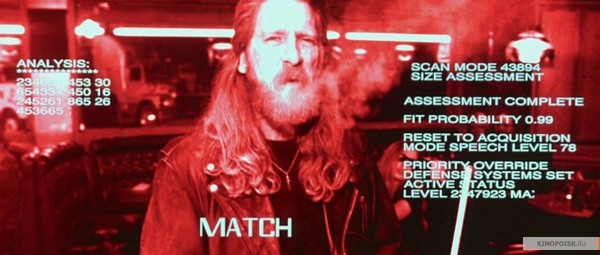Как узнать токен спотифай
Authorization Code Flow
The authorization code flow is suitable for long-running applications (e.g. web and mobile apps) where the user grants permission only once.
If you’re using the authorization code flow in a mobile app, or any other type of application where the client secret can’t be safely stored, then you should use the PKCE extension. Keep reading to learn how to correctly implement it.
The following diagram shows how the authorization code flow works:

Prerequisites
This guide assumes that you have created an app following the app settings guide.
Source Code
You can find an example app implementing authorization code flow on GitHub in the web-api-auth-examples repository.
Request User Authorization
The first step is to request authorization from the user, so our app can access to the Spotify resources in behalf that user. To do so, our application must build and send a GET request to the /authorize endpoint with the following parameters:
If you are implementing the PKCE extension, you must include these additional parameters:
Example
The following JavaScript code example implements the /login method using Express framework to initiates the authorization request:
Once the request is processed, the user will see the authorization dialog asking to authorize access within the user-read-private and user-read-email scopes.
The Spotify OAuth 2.0 service presents details of the scopes for which access is being sought. If the user is not logged in, they are prompted to do so using their Spotify credentials. When the user is logged in, they are asked to authorize access to the data sets or features defined in the scopes.
Response
If the user accepts your request, then the user is redirected back to the application using the redirect_uri passed on the authorized request described above.
The callback contains two query parameters:
| Query Parameter | Value |
|---|---|
| code | An authorization code that can be exchanged for an Access Token. |
| state | The value of the state parameter supplied in the request. |
If the user does not accept your request or if an error has occurred, the response query string contains the following parameters:
| Query Parameter | Value |
|---|---|
| error | The reason authorization failed, for example: “access_denied” |
| state | The value of the state parameter supplied in the request. |
In both cases, your app should compare the state parameter that it received in the redirection URI with the state parameter it originally provided to Spotify in the authorization URI. If there is a mismatch then your app should reject the request and stop the authentication flow.
Request Access Token
If the user accepted your request, then your app is ready to exchange the authorization code for an Access Token. It can do this by making a POST request to the /api/token endpoint.
The body of this POST request must contain the following parameters encoded in application/x-www-form-urlencoded :
If you are implementing the PKCE extension, these additional parameters must be included as well:
| REQUEST BODY PARAMETER | VALUE |
|---|---|
| client_id | Required. The client ID for your app, available from the developer dashboard. |
| code_verifier | Required. The value of this parameter must match the value of the code_verifier that your app generated in the previous step. |
The request must include the following HTTP headers:
Example
This step is usually implemented within the callback described on the request of the previous steps. The following example implements the Access Token request inside the callback method:
Response
On success, the response will have a 200 OK status and the following JSON data in the response body:
| KEY | VALUE TYPE | VALUE DESCRIPTION |
|---|---|---|
| access_token | string | An Access Token that can be provided in subsequent calls, for example to Spotify Web API services. |
| token_type | string | How the Access Token may be used: always “Bearer”. |
| scope | string | A space-separated list of scopes which have been granted for this access_token |
| expires_in | int | The time period (in seconds) for which the Access Token is valid. |
| refresh_token | string | A token that can be sent to the Spotify Accounts service in place of an authorization code. (When the access code expires, send a POST request to the Accounts service /api/token endpoint, but use this code in place of an authorization code. A new Access Token will be returned. A new refresh token might be returned too.) |
The following example, shows how the successful response looks like:
Request a refreshed Access Token
Access tokens are deliberately set to expire after a short time, after which new tokens may be granted by supplying the refresh token originally obtained during the authorization code exchange.
In order to refresh the token, a POST request must be sent with the following body parameters encoded in application/x-www-form-urlencoded :
If you are implementing the PKCE extension, this additional parameter must be also included:
| REQUEST BODY PARAMETER | VALUE |
|---|---|
| client_id | Required. The client ID for your app, available from the developer dashboard. |
The headers of this POST request must contain the following parameters, except if you are implementing PKCE where only Content-Type is required:
Example
The following example retrieves a refreshed Access Token once the current one has expired:
The response will be similar to this:
What’s next?
Learn how to use an access token to fetch track information from the Spotify Web API in the How to use the Access Token guide.
Authorization
Authorization refers to the process of granting a user or application access permissions to Spotify data and features. Spotify implements the OAuth 2.0 authorization framework:
End User corresponds to the Spotify user. The End User grants access to the protected resources (e.g. playlists, personal information, etc.)
My App is the client that requests access to the protected resources (e.g. a mobile or web app).
Server which hosts the protected resources and provides authentication and authorization via OAuth 2.0.
The access to the protected resources is determined by one or several scopes. Scopes enable your application to access specific functionality (e.g. read a playlist, modify your library or just streaming) on behalf of a user. The set of scopes you set during the authorization, determines the access permissions that the user is asked to grant. You can find detailed information about scopes in the scopes guide.
The authorization process requires valid client credentials: a client ID and a client secret. You can follow the App settings guide to learn how to generate them.
Once the authorization is granted, the authorization server issues an access token, which is used to make API calls on behalf the user or application.
The OAuth2 standard defines four grant types (or flows) to request and get an access token. Spotify implements the following ones:
Which OAuth flow should I use?
Choosing one flow over the rest depends on the application you are building:
If you are developing a long-running application (e.g. web app running on the server) in which the user grants permission only once, and the client secret can be safely stored, then the authorization code flow is the recommended choice.
In scenarios where storing the client secret is not safe (e.g. desktop, mobile apps or JavaScript web apps running in the browser), you can use the authorization code with PKCE, as it provides protection against attacks where the authorization code may be intercepted.
For some applications running on the backend, such as CLIs or daemons, the system authenticates and authorizes the app rather than a user. For these scenarios, Client credentials is the typical choice. This flow does not include user authorization, so only endpoints that do not request user information (e.g. user profile data) can be accessed.
The implicit grant has some important downsides: it returns the token in the URL instead of a trusted channel, and does not support refresh token. Thus, we don’t recommend using this flow.
The following table summarizes the flows’ behaviors:
| FLOW | Access User Resources | Requires Secret Key (Server-Side) | Access Token Refresh |
|---|---|---|---|
| Authorization code | Yes | Yes | Yes |
| Authorization code with PKCE | Yes | No | Yes |
| Client credentials | No | Yes | No |
| Implicit grant | Yes | No | No |
What’s next?
Before continuing, make sure you have created an app following the app settings guide.
Determine which kind of application you are going to develop and read the corresponding flow as described above.
Finally, learn how to use the requested access token by reading the How to use the Access Token Guide.
Твоя музыка из спотифи в статус вк
открываем файл main.py с помощью блокнота или notepad++
нам нужна эта строчка
STANDART_STATUS = «ваш статус когда музыка не играет в спотифи»
VK_TOKEN = «токен который вы получите на этой ссылке ( выберете Kate Mobile)»
SPOTIFY_TOKEN = «ваш токен SPOTIFY получаете его когда копируете ссылку на свой профиль он после user/«
CLIENT_ID = «индификатор приложения в спотифи (получить его можно здесь)»
CLIENT_SECRET = «индификатор приложения в спотифи (получить его можно здесь нажмите
UID = «айди вашего вк скопируйте после vk.com/ «
если всё правильно
запускайте main.py
(просто нажмите по нему 2 раза)
появиться это
у меня не получается, я туповат в этом, не поможешь лично? или может изменилось что за это время
напиши плиз в вк vk.com/fozysha
я один в main.py не могу найти SPOTIFY_TOKEN? нужна пояснительная бригада, автор. Заранее спасибо
INVALID_CLIENT: Invalid redirect URI
Что делать? Мой вк: https://vk.com/layf04
Напишите как решить
Зачем и кому это нужно?
C — смекалка
Когда мёржишь ветку, несмотря на то, что автотесты посыпались
Интересная библиотечка
Бороздя GitHub сегодня обнаружил довольно интересный проект на Python по восстановлению паролей по затёртым областям. Интересно теперь такое проверить на замазанных именах со скриншотов из соцсетей, никах в твиттере 🙂
Разница между Git и Github
– В чем разница между git и github?
– Вероятно, это лучшее объяснение, которое я когда-либо слышал.
Позаимствовал у друга с ФБ 🙂
Ну мам.
Для тех репо, куда пушат только создатели
Определены лучшие оптические иллюзии 2016 года
Автокинетическая иллюзия (феномен иллюзорного движения, наблюдаемый в ситуации длительной фиксации взгляда на неподвижном объекте), финалист конкурса 2014 года и обладатель максимального рейтинга за всё время проведения конкурса
Организаторы конкурса The Best Illusion of the Year объявили победителей 2016 года.
Этот конкурс с 2005 года проводит Общество неврологических исследований (Neural Correlate Society), привлекая лучших специалистов по созданию иллюзий, где видимые и субъективно воспринимаемые мозгом объекты не совпадают с объективной реальностью.
Изучение иллюзий является важным элементом для понимания, как работает система обработки данных с органов чувств. Это ценная информация для офтальмологов и неврологов, в том числе для диагностирования и лечения различных заболеваний.
Как известно, в обработке визуальной картины мира участвуют конкретные структуры мозга, которые интерпретируют видимые объекты. Таким образом, всё, что видит человек, является в каком-то смысле иллюзией.
Знаменитая «Маска любви» с конкурса 2011 года, обладатель 2-го места по рейтингу за всё время проведения конкурса. Мозг зрителя сначала видит в маске лицо, а потом совершает «переключение» и видит два лица (так называемая «бистабильная иллюзия»)
Организаторы считают, что конкурсы всегда было частью научной традиции и часто становились стимулом для проведения интересных научных исследований, а также служат для пропаганды научного знания. Всем известны Нобелевская премия в нескольких научных дисциплинах, Филдсовская премия в математике и конкурс X Prize для частных компаний, который навсегда изменил космонавтику.
Даже современное научное сообщество само по себе обладает состязательными элементами: например, научные гранты — это призы, которые вручает комитет судей, в зависимости от качества предложенных научных идей.
В общем, проведение конкурсов — отличная идея, и конкурс оптических иллюзий лишний раз подтверждает это.
Победителем 2016 года стала работа “Motion Integration Unleashed: New Tricks for an Old Dog”, авторы Мэтью Харрисон (Mathew T. Harrison) и Гидеон Капловиц (Gideon P. Caplovitz) из университета Невады в Рино (США). На подготовленном ими видео движутся элементы Габора, напоминающие решетки с синусоидальным распределением яркости.
Элементы Габора несколько раз использовались для подготовки оптических иллюзий на прошлых конкурсах. В частности, движение элементов Габора создавало эффект, что объект движется в противоположном направлении его реальному движению.
В данной работе авторы показывают вариации объектов из нескольких стационарных элементов Габора, которые создают набор различных иллюзий: вращающийся квадрат, колеблющиеся палочки, проходящие волны и т.д. В каждом случае все элементы Габора остаются неподвижными, хотя человеческому мозгу кажется, что это не так.
Второе место в этом году заняла иллюзия с «неоднозначными цилиндрами» “Ambiguous Cylinder Illusion” — безусловный победитель зрительского голосования. Совершенно непонятно, почему авторитетное жюри иллюзионистов отдало этой гениальной работе только второе место.
Автор этой работы — Кокити Сугихара (Kokichi Sugihara) из университета Мэйдзи (Япония) — сумел создать вертикальные цилиндры необычной формы, которые с одной стороны выглядят как квадраты, а с другой стороны — как окружности. Таким образом, если поставить их перед зеркалом, то верхняя грань цилиндра будет выглядеть как квадрат и окружность одновременно!
Наверное, только нестандартный японский ум мог изобрести нечто подобное.
Работа Кокити Сугихара вызвала неподдельный интерес у специалистов. Один из них произвёл тщательную реконструкцию оригинальной формы этой фигуры и распечатал её на 3D-принтере. В его реконструкции иллюзия получается не хуже, чем у японца.
Если у вас есть 3D-принтер, то можно распечатать детальку бесплатно: STL-файлы.
Список призёров завершает Кристина Верас (Christine Veras) из Наньянского технологического университета (Сингапур) со своей работой “Silhouette Zoetrope”, интересным вариантом зоотропа.
В этой работе используется принцип знаменитого зоотропа — устройства для демонстрации движущихся рисунков, которое появилось задолго до кинематографа. Перовые упоминания такого прибора встречаются в китайских летописях 180 года н.э. В зоотропе иллюзия движущейся картинки появляется из-за персистенции — особенности человеческого зрения, когда последовательные события кажется непрерывными.
В сингапурской «инверсной» модификации зоотропа иллюзия изображения создаётся внутри барабана (стробоскопа) при его вращении.
Полиция Далласа применила робота для убийства человека
Вчера в Далласе (США) впервые в истории робототехники гражданского робота использовали для убийства преступника.
Такие операции часто проводятся на войне. Для уничтожения врага применяют беспилотные летательные аппараты, самоходные установки с дистанционным управлением, пограничные пулемёты с системами ночного зрения и радарами и другие разнообразные автоматические системы.
Но в гражданской жизни убийство роботом человека до 8 июля 2016 года встречалось только в научно-фантастических фильмах.
Для полиции США вчерашний день принёс самые большие потери рядового состава со времён 11 сентября 2001 года.
Следователи полагают, что Джонсон состоял в неформальном боевом клубе и многократно практиковался в стрельбе по мишеням. Этим объясняется настолько высокая точность попаданий.
C преступником общался переговорщик, он говорит, что Джонсон выражал неудовольствие «белыми людьми» и последними случаями насилия, когда полицейские зачастую расстреливали чёрных подозреваемых.
Это не первый случай, когда полиция использует автономных роботов-сапёров не по назначению. Например, в апреле 2015 года полиция Сан-Хосе отговорила человека от самоубийства: с ним удалось побеседовать, когда робот принёс ему пиццу и телефон.
Система компьютерного зрения Терминатора
Другое дело, что вручную можно назначить цель для уничтожения, указав преступника, а робот сам подберётся к нему — и уничтожит. Возможно, в далёком будущем законы позволят устанавливать цель для уничтожения даже в том случае, если преступник отсутствует в поле видимости. Например, только по его биометрической информации.
Web API
Based on simple REST principles, the Spotify Web API endpoints return JSON metadata about music artists, albums, and tracks, directly from the Spotify Data Catalogue.
Web API also provides access to user related data, like playlists and music that the user saves in the Your Music library. Such access is enabled through selective authorization, by the user.
The base address of Web API is https://api.spotify.com. The API provides a set of endpoints, each with its own unique path. To access private data through the Web API, such as user profiles and playlists, an application must get the user’s permission to access the data. Authorization is via the Spotify Accounts service.
Requests
The Spotify Web API is based on REST principles. Data resources are accessed via standard HTTPS requests in UTF-8 format to an API endpoint. Where possible, Web API uses appropriate HTTP verbs for each action:
| Method | Action |
|---|---|
| GET | Retrieves resources |
| POST | Creates resources |
| PUT | Changes and/or replaces resources or collections |
| DELETE | Deletes resources |
Spotify URIs and IDs
In requests to the Web API and responses from it, you will frequently encounter the following parameters:
| PARAMETER | DESCRIPTION | EXAMPLE |
|---|---|---|
| Spotify URI | The resource identifier that you can enter, for example, in the Spotify Desktop client’s search box to locate an artist, album, or track. To find a Spotify URI simply right-click (on Windows) or Ctrl-Click (on a Mac) on the artist’s or album’s or track’s name. | spotify:track:6rqhFgbbKwnb9MLmUQDhG6 |
| Spotify ID | The base-62 identifier that you can find at the end of the Spotify URI (see above) for an artist, track, album, playlist, etc. Unlike a Spotify URI, a Spotify ID does not clearly identify the type of resource; that information is provided elsewhere in the call. | 6rqhFgbbKwnb9MLmUQDhG6 |
| Spotify category ID | The unique string identifying the Spotify category. | party |
| Spotify user ID | The unique string identifying the Spotify user that you can find at the end of the Spotify URI for the user. The ID of the current user can be obtained via the Web API endpoint. | wizzler |
| Spotify URL | An HTML link that opens a track, album, app, playlist or other Spotify resource in a Spotify client (which client is determined by the user’s device and account settings at play.spotify.com. | http://open.spotify.com/track/6rqhFgbbKwnb9MLmUQDhG6 |
Responses
Web API responses normally include a JSON object. Browse the reference documentation to find descriptions of common responses from each endpoint.
Timestamps
Pagination
Some endpoints support a way of paging the dataset, taking an offset and limit as query parameters:
In this example, in a list of 50 ( total ) singles by the specified artist : From the twentieth ( offset ) single, retrieve the next 10 ( limit ) singles.
Conditional Requests
Most API responses contain appropriate cache-control headers set to assist in client-side caching:
Response Status Codes
Web API uses the following response status codes, as defined in the RFC 2616 and RFC 6585:
Response Schema
Web API uses two different formats to describe an error:
Authentication Error Object
Whenever the application makes requests related to authentication or authorization to Web API, such as retrieving an access token or refreshing an access token, the error response follows RFC 6749 on the OAuth 2.0 Authorization Framework.
| Key | Value Type | Value Description |
|---|---|---|
| error | string | A high level description of the error as specified in RFC 6749 Section 5.2. |
| error_description | string | A more detailed description of the error as specified in RFC 6749 Section 4.1.2.1. |
Here is an example of a failing request to refresh an access token.
Regular Error Object
Apart from the response code, unsuccessful responses return a JSON object containing the following information:
| Key | Value Type | Value Description |
|---|---|---|
| status | integer | The HTTP status code that is also returned in the response header. For further information, see Response Status Codes. |
| message | string | A short description of the cause of the error. |
Here, for example is the error that occurs when trying to fetch information for a non-existent track:
Authentication
All requests to Web API require authentication. This is achieved by sending a valid OAuth access token in the request header. For more information about these authentication methods, see the Web API Authorization Guide.






















